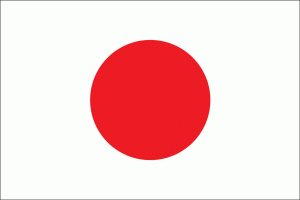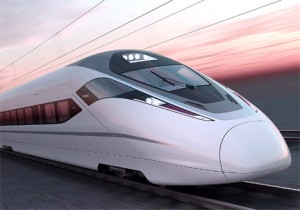 Population of Japan 2014
Population of Japan 2014
Based on the total number of births, total number of deaths, net migration rates, and the population of 2013, the current population of Japan is estimated to be about 127,052,765. As a result, Japan is the tenth-most populous country in the world, behind Russia, but ahead of Mexico. Japan is one of the few larger countries that is experiencing a population decline instead of a population increase. At the end of 2013, the population was estimated to be about 127,143,577. Therefore, since the end of 2013, there has been a decline of about 91,000 people. The decline in population mainly comes as a result of the age of the population. There is a large portion of the population that is over the age of 65 years. In 2013, around 24% of the population was over the age of 65 years. Based on the population and the land area, the population density of Japan is about 336.17 people per square kilometer or 870.67 people per square mile.
Geography of Japan
Japan is made up of 6,852 islands, which in total are known as the Japanese archipelago and which stretch along the Pacific coast of East Asia. The main islands are the following: Hokkaido, Honshu, Shikoku, and Kyushu. Another large group of Japanese islands is known as the Ryukyu Islands. Honshu is the largest island and is typically known as the mainland of the country. Overall, over 70% of the land is deemed as unsuitable for living due to the high concentrations of forests and mountains. As a result, the remaining areas that are suitable for living are quite dense in terms of population. Because the island has 108 active volcanoes, many earthquakes and tsunamis occur as a result. The most recent earthquake was a 9.0 magnitude earthquake, which resulted in a tsunami afterwards, on March 11, 2011.
Climate of Japan
The islands of Japan are divided into six climate zones: Hokkaido, Sea of Japan, Central Highland, Seto Inland Sea, Pacific Ocean, and the Ryukyu Islands. Hokkaido is the most northern region and is characterized by its humidity. It has long and cold winters, but very warm summers. The region does not receive an abnormal amount of rain, but it does receive a heavy amount of snow in the winter. The Sea of Japan region is along the western coast of Honshu. The region receives heavy snowfall during the winter and mainly cool temperatures in the summer. However, hot temperatures in this region during the summer come as a result of foehn wind. The Central Highland region is characterized by its humidity. There is a large difference between temperatures during the summer and winter, along with differences between day and night. Despite the low levels of precipitation, winters receive much snow.
Due to the mountains in the Chugoku and Shikoku regions, there is mild weather all year in the Seto Inland Sea region. The Pacific Ocean region experiences humid and subtropical climates. The winters are fairly mild, but the summers are hot and humid. The last region, the Ryukyu Islands, experience a subtropical climate. The winters are fairly warm, but their winters are hot. There is a high level of precipitation along with a high level of humidity. This climate is what results in the beautiful blooming of the spring cherry blossoms and the fall colors of leaves, which are typically portrayed in artwork. Overall, the average temperature in Japan is 41.2°F. The average summer temperature, though, is 77.4°F. Lastly, typhoon season is in the end of summer and the beginning of the fall.
Economy of Japan
The Japanese economy is ranked as the third largest in terms of nominal Gross Domestic Product, the fourth largest in terms of Purchasing Power Parity, and is the second largest developed economy. The currency is the Japanese Yen. The agricultural sector of the economy makes up only 1.4% of the total GDP, which may be because only 12% of the land is suitable for farming. The sector is highly regulated by the government, evident through the 777.7% tariff on rice imports. Some major agricultural imports include wheat and soybeans. The service sector in Japan accounts for about 75% of its total economy. As of 2013, it was home to almost 13% of the Forbes Global 2000. In 2012, Japan was the fifth most visited country in Asia and the Pacific. In fact, 2013 blew the number of visitors of 2012 out of the water, totaling 11.25 million visitors. Lastly, as of January 30, 2014, the unemployment rate in Japan is 3.7%, which showed a 0.3% decrease from November 2013.
Health Care in Japan
Japan has a universal health care system through which every citizen can receive care. Having health insurance is mandatory, despite the fact that there is no penalty for not having it. Around 10% of the population does not have health insurance. The government regulates all of the medical fees, preventing the facilities from overcharging or making a profit. All hospitals and health care facilities are run as non-profits. Depending on a person or family’s income, a person/family is either responsible for 10%, 20%, or 30% of the medical costs. The government pays the other portion of the costs. Some health concerns in Japan include the high suicide rates, smoking, and pollution. Suicide is the leading cause of death for those citizens under the age of 30. 65% of the suicides were as a result of job loss. Some other factors include social pressure and depression. Despite these health concerns, Japanese women have the second highest life expectancy of any other country in the world. Lastly, according to the United Nations, Japan has the third lowest infant mortality rates.
Education in Japan
The literacy rate of Japan is 99%, which came as a result of the essential role that education has played in Japanese society, especially since the end of World War II. Education is required from ages 6 to 15, which include elementary and lower secondary schools. In the junior school (lower secondary), the students study the Japanese language, social studies, mathematics, science, music, fine arts, health, and physical education. They also encourage learning foreign languages, especially English. In 2005, about 94% of junior high school graduates attended high school. There are universities and colleges that students can attend after high school. In fact, as of 2010, over 2.8 million students were attending a college or university. Lastly, as of 2011, 33 of Japan’s universities ranked in the Top 100 Asian Universities.
Japanese Population Risking Extinction
 Transportation in Japan
Transportation in Japan
Japan has approximately 1.2 million kilometers of paved roads. The road network throughout the country is considered to be the main form of transportation. Despite this fact, only about 50% of the distance traveled in Japan is taken by cars or roads. Another large part of Japanese transportation is its railway and train system. Japan has over 250 high-speed trains, which are known for their safety and timeliness. Also, there are 173 airports, one of which, Haneda Airport, is the second busiest airport in all of Asia and the largest airport in Japan. Lastly, Nagoya Port accounts for 10% of Japan’s trade and is the largest and busiest port in the country.


